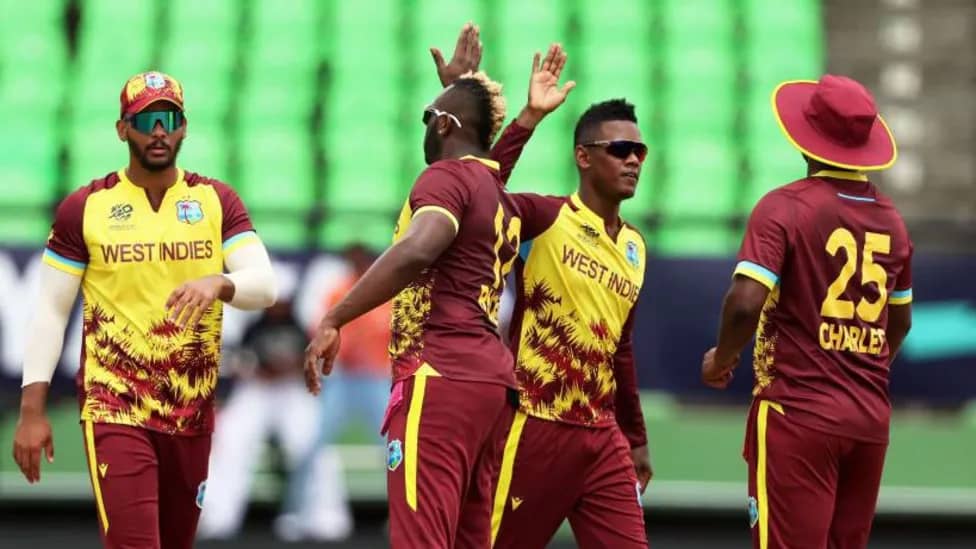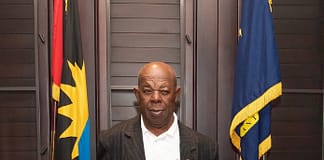
West Indies Cricket – my further thoughts
When you cannot crawl, but want to run.
It was and will be unacceptable to pick players who did not participate nor perform credibly in the West Indies Championship.
The only yardstick is the West Indies Championship, presently consisting of seven matches.
“Low Intensity” matches as described by Desmond Haynes.
The bowling in the West Indies championship is headlined by poor-quality spinners.
But this is the only yardstick for batsmen. In other words, the batsmen are not exposed to quality pace bowling. But yet still cannot play mediocre spin bowling.
The solution
1. End-of-season four-team competition where four Captains are chosen by the eight Managers
2. Each Captain is assigned with one of the Managers of the top-four teams.
3. Each Captain and Manager will pick a team, one player at a time, in rotation. (As happens in the schoolyard.)
4. Each Team must have two under-25 players and two pace bowlers, in the final eleven.
5. A round robin competition among the four teams, resulting in three matches.
6. A final match of two teams, the players are chosen based on performance, with at least two pace bowlers in the final eleven.
Thus the top players will play eleven matches.
(But the pitches must be prepared for pace.)
Cricket West Indies Camp
After this, the top fifteen batsmen, the top ten pace bowlers, top three wicketkeepers and the top five spin bowlers go into an all-year CWI camp, with at least one in each category being under-25.
Most of these players would have CWI Retainer Contracts or Regional Board Retainer Contracts.
Camp sessions must mimic an eight-hour day, for five days. (like any employee having to work five days a week for eight hours)
Discipline is to be instilled. Remember when the players abandoned camp at lunchtime, leaving the coaches alone at the camp.
The camp could be two-week sessions, fourteen days, every month, minimum.
2003.05.28
Save West Indies Cricket
Over the last five years and more, West Indies cricket has been in a slump. Small flickers of hope present themselves with many fanfares, only to be followed by dismal failure. It is quite apparent that the present administrators seem to have no solution to the problem.
The Trinidad and Tobago captain after two consecutive losses in five matches reportedly said that his team is tired. This after the team has been in camp for more than a month. The manager reportedly said that the team needs to become involved in non-cricket activities and played basketball the next day. The CEO stated that the team is more involved in clothing, going home and financial remuneration with little focus on cricket. In summary, therefore, none of the Trinidad and Tobago cricketers are ready for West Indies Test cricket.
An American run university in Grenada has now established a cricket academy for West Indies cricket. Three of the selectees declined to join the Academy for the current session. It is rumoured that they are more interested in being selected for the West Indies ‘A’ side. It is expected that the WICB will inform the three misguided youths that they are banned from all future selections. And one hopes that the WICB does possess that fortitude to make such a decision.
Before every tour, there is a two-week training camp. Yet still, many players are leaving the team with injuries. Performance is below par, except for the first match. After the first match, it is all downhill thereafter.
After a season of mediocre performances in five regional matches, test cricketers are born. The regional season consists of a maximum of seven matches now, if one reaches the final. History will reveal that all of our past cricketers played in the English county league that consisted of over twenty three/four-day matches, with one-day matches in-between. It is thus quite apparent that our cricketers are lacking match practise and are also unfit.
Caricom, at the Head of State level, has recognised the problem and has even formed a special committee on West Indies cricket. The University of the West Indies has allowed an American-run university to establish the first cricket academy in the West Indies. In fact, the University of the West Indies has not established any sporting facility or sport programme to promote sport academics in the West Indies in its fifty years of existence. It is now safe to say that the United States, as in other spheres of our life, control our sports. DISGUSTING!!
Sport today is no longer confined to “raw” talent. There are many aspects to being successful. There are physical, social, psychological, economic, nutritional and other aspects that have to be dealt with. The Australian cricket team underscores this point, sometimes travelling with it’s own cook. Substitute players, for the Waugh twins, Warne and Gillespie, were instant successes at World Cup 2003. Even the substitute for substitute Symmonds was a success.
So what are some of the solutions:
1. The regional season has to be longer than six or seven weeks. Home and away matches among the six traditional teams will result in a ten-week tournament. Add one or two invitational sides, if such teams are really needed, and we now have an eleven/ twelve-week tournament.
2. Caricom and their respective regional governments should sponsor their individual teams so as to create a professional type league that may create a level of professionalism. Cricket and the University of the West Indies are the only unifying aspects of life in the West Indies.
3. Only players who participate and are outstanding in the regional tournament will be eligible for West Indies selection. Hence the dates for the regional tournament must be planned two years in advance so that ignorance is not an excuse.
4. Whilst the participation of a youth team is commendable, it only serves to decrease the standard of play and should be ceased.
5. The University of the West Indies should create an Academy/Faculty of Sports. Through this Sport Faculty, the University should be encouraged to participate in the regional tournament. This is preferred to the youth team. Thus, we may now have a fourteen-week regional tournament. But it seems that the Shell Academy of St. Georges University is the preferred and accepted system of the West Indies Cricket Board. Hence, the participants at the Shell Academy should form the basis of a youth team, thereby showing if they did in fact learn anything.
6. Each regional side should be allowed to select, one or two, non-West Indian players for each match and for the entire season.
7. The West Indies Cricket Board and the regional affiliates should become more business oriented and should market the West Indies to the maximum.
8. Training camps should be organised throughout the year, in addition to just before a tour. Players should be subjected to routine fitness and training programmes.
9. Age-group programmes should be developed in all countries. Tournaments will only be successful if the programmes have developed quality players.
10. Coaches and other team officials should resign or vacate their positions after failure to produce results. Having three year contracts does not mean that the sport must tolerate three years of failure.
It is important that all sport administrators, be it cricket, soccer, athletics, etc., become serious and professional in the development of the respective sport for which they control. They must not assume positions for want of power, for a free air-fare, for a free ticket to competitions and tournaments and more importantly, for self-gain.
The present “Mafia-type” attitude to hold on to the mantle of sport administration, whilst the sport continues to deteriorate to extinction must be stopped now rather than later. Sport in the West Indies today needs innovators and thinkers, developers rather than linger-ons. There are many young aspiring athletes who will require guidance and support for continued success, both of which are presently lacking.
One must not expect overnight successes. The WICB should project a turnaround in five years time, allowing the present young players to be fine tuned and to develop maturity and experience. Youth programmes should be developed, with the primary aim of ensuring a basic standard of performance. Errors displayed at an international level during the 2003 Australian series were an embarrassment to regional cricket. During these five years, the respective Governments should invest into their respective teams. As the regional cricket becomes a success, sponsorship will return, eventually relieving the Governments of this burden.
But, assistance, financial and otherwise, is needed from the governments in the next five years. Otherwise, World Cup 2007 will be a financial venture and not a sporting venture.
Advertise with the mоѕt vіѕіtеd nеwѕ ѕіtе іn Antigua!
We offer fully customizable and flexible digital marketing packages.
Contact us at [email protected]


















More chat, chat, chat that has no real solution. First of all West Indies cricket is owned by a private group named Cricket West Indies, who have no accountability to anyone. Any government that agrees to spend tax payers money with no say and no accountability should be voted out immediately.
And the way the CWI is structured with voting rights means that the result is rigged.
CWI owns no pitch or playing facility except the old Stanford ground which it co-owns with the government of Antigua and Barbuda.
Next, having sorted that out, Governments must be prepared to make sport a compulsory activity in all schools to include cricket from primary school. But here is the problem. University scholarships are available for soccer, golf, track and field, basketball and even swimming. None are available for cricket.
And I can go on and on but I think you get the idea. I have not even touched cultural penetration and social media which have changed the priorities of our young people.
This is not an easy problem to fix and should have been addressed 25 years ago but there was no vision. The horse may have already bolted.
Comments are closed.